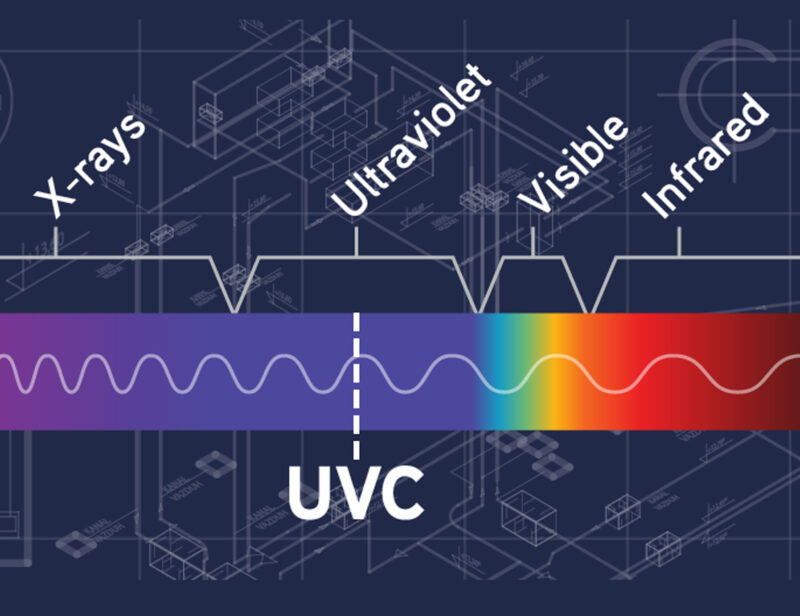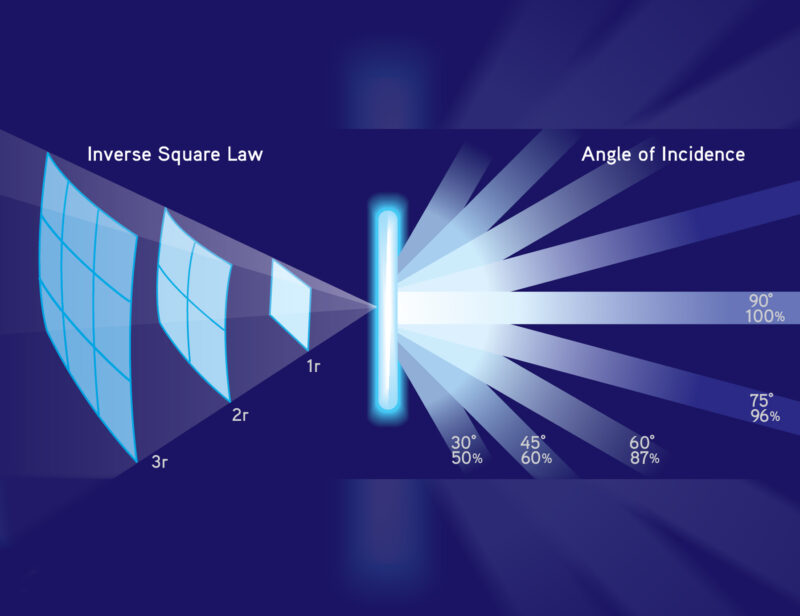

Using MoonBeam3, as it is intended to be used, arms outstretched, heads generally pointed toward the target, the MoonBeam3 is equal or better than a tower. All of the above supports this. However, towers are “better” when they are used to disinfect far away vertical surfaces – “vertical surfaces” being the relevant words. All of the above supports this, too. Set aside for the moment that most surfaces to disinfect are horizontal, not vertical. We need to discuss the definition of towers, because not all towers are created equal.
Tower UVC systems take a limited number of form factors. The main difference is in the number of bulbs, length of bulbs, and use of reflector or no reflector. As examples, there are the bullet shaped towers, with 28, 24 and 20 bulbs, then the tall 54″ to 64″ length bulb systems, 8 bulbs per system, and finally the 64″ long bulb, 4 or 3 bulbs per system, a few other derivatives, and finally, the pulsed xenon system. In general, all of these systems work to various efficacies. The systems that generate the largest amount of initial UVC will do better than others. In tower systems, the height of the bulbs is an important contributor. Increased height allows increasing the angle of incidence and delivered dose, but only to a point, because increasing height then immediately begins reducing dose due to the inverse square law. A good balance is needed, or one can simply use MoonBeam3 and avoid all that for a fraction of the cost per unit.
MoonBeam3’s three individually positionable heads, even being close to properly positioned, allows optimized distance to targets and angle of incidence for the best overall dose. If you want to disinfect the far corner, run another closer proximity cycle with MoonBeam3, 90 seconds will do it. Or, a customer can purchase a unit for five times the cost and move it multiple times in the room or purchase a unit for ten times the cost and still need to move it… The laws of physics control this phenomenon.
Finally, there are physical and electrical limitations that preclude simply radically increasing UVC wattage. It is important to use the best electrical components and best UVC generating bulbs, but there is a limit to the output that can be obtained without needing specific electrical sockets. Until there is a major leap in UVC generating technology, it seems that the industry has tapped into the power available. Getting the dose close and initial UVC output may, in general, be considered interchangeable, but there is absolutely no substitute for proper angle of incidence. MoonBeam3 has solid initial power, but it is the application of that power that sets the device apart.

